Tinkoff-Saxo consider legal action after Sagan taken down by race motorcycle
Updated: Slovakian wants changes to be made to prevent incidents
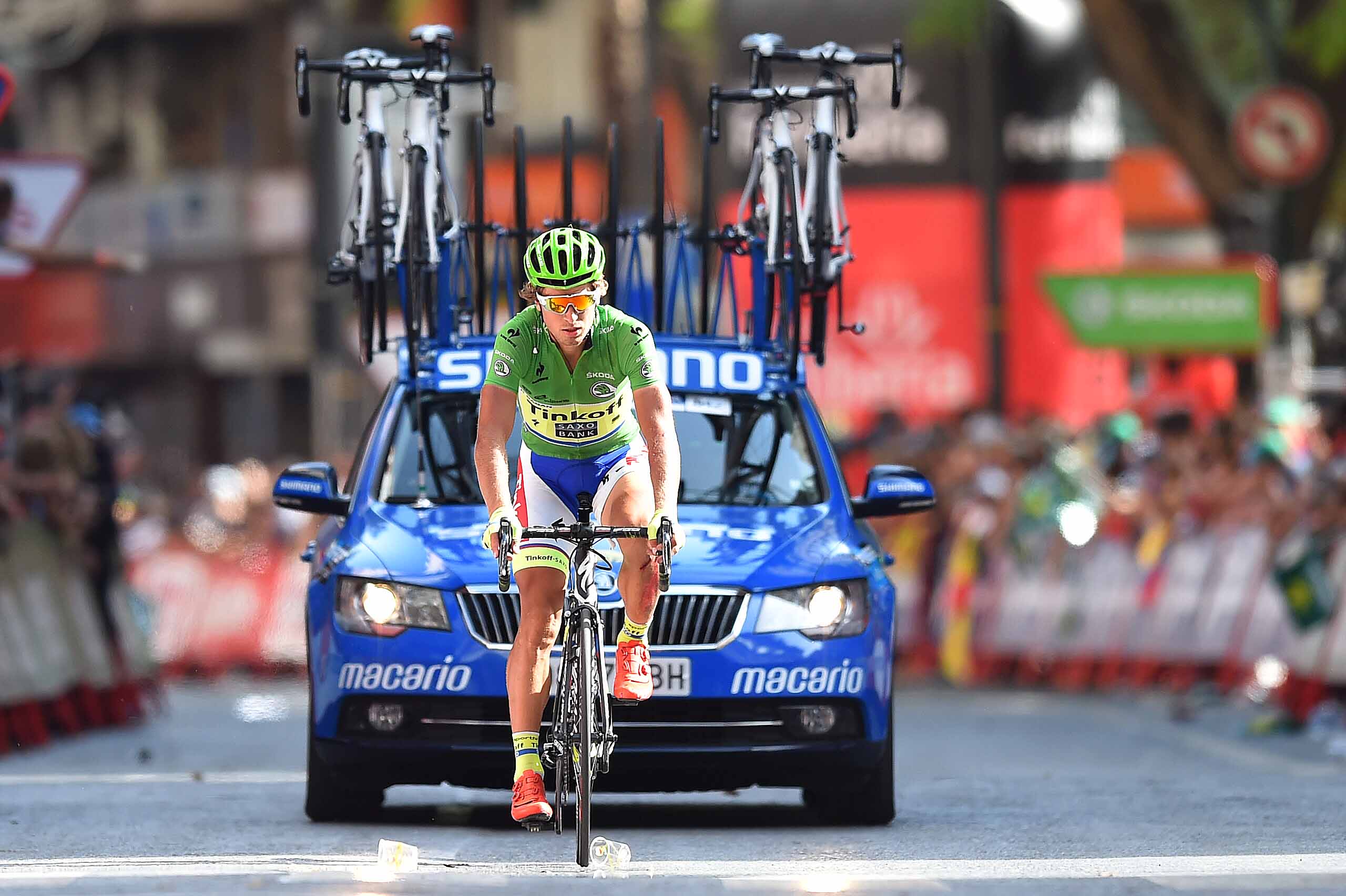
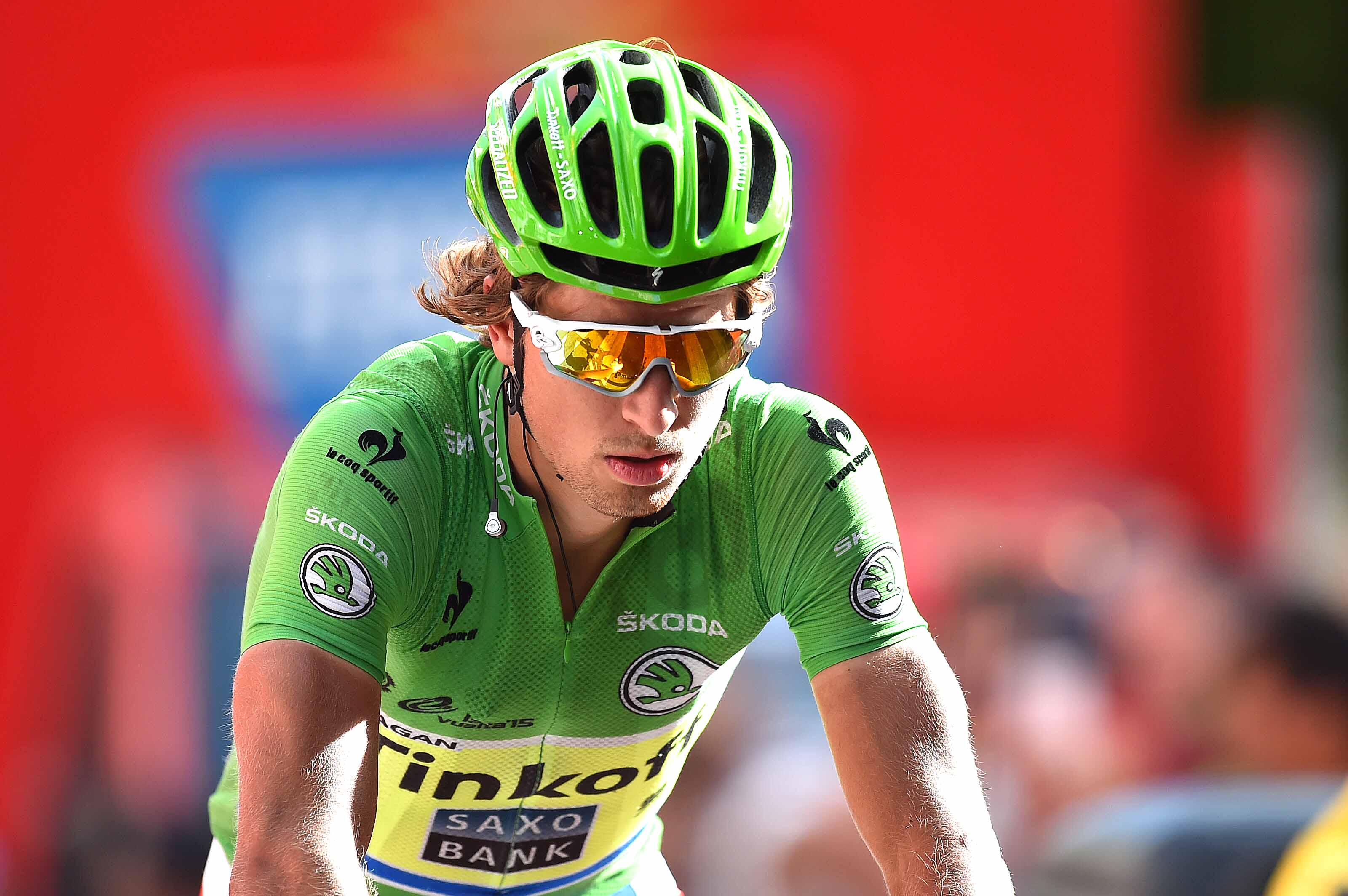
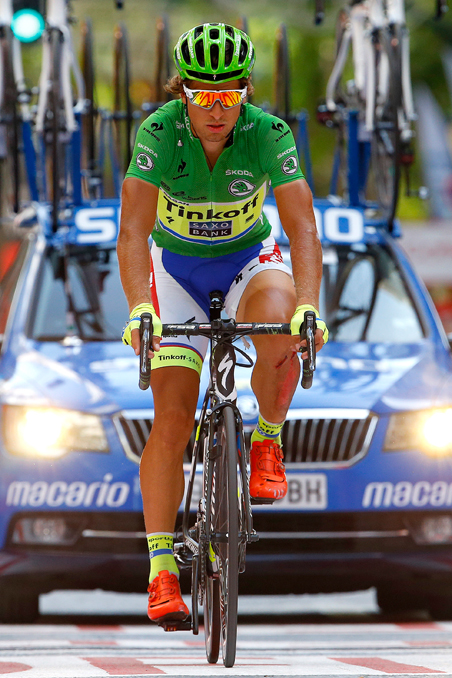
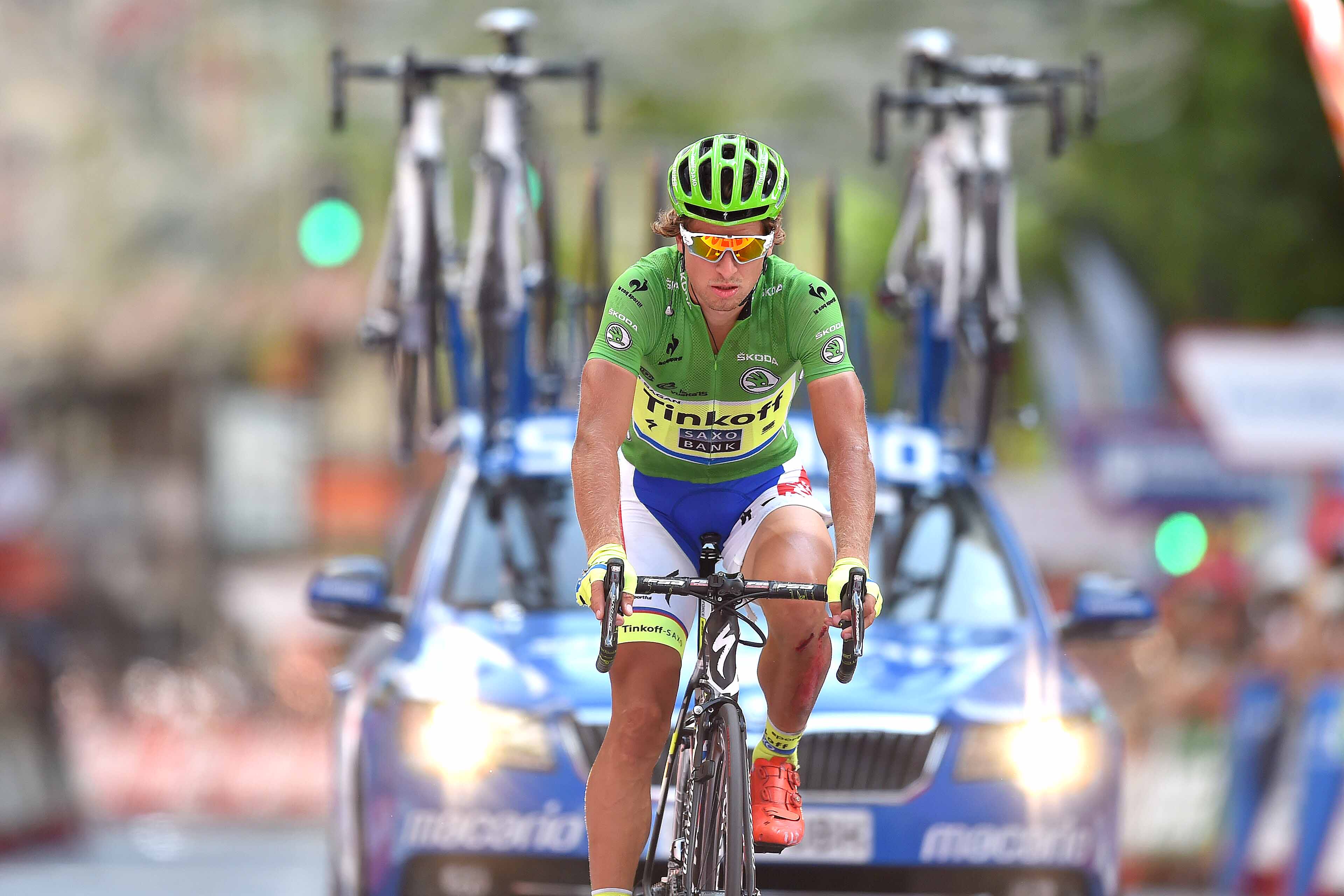
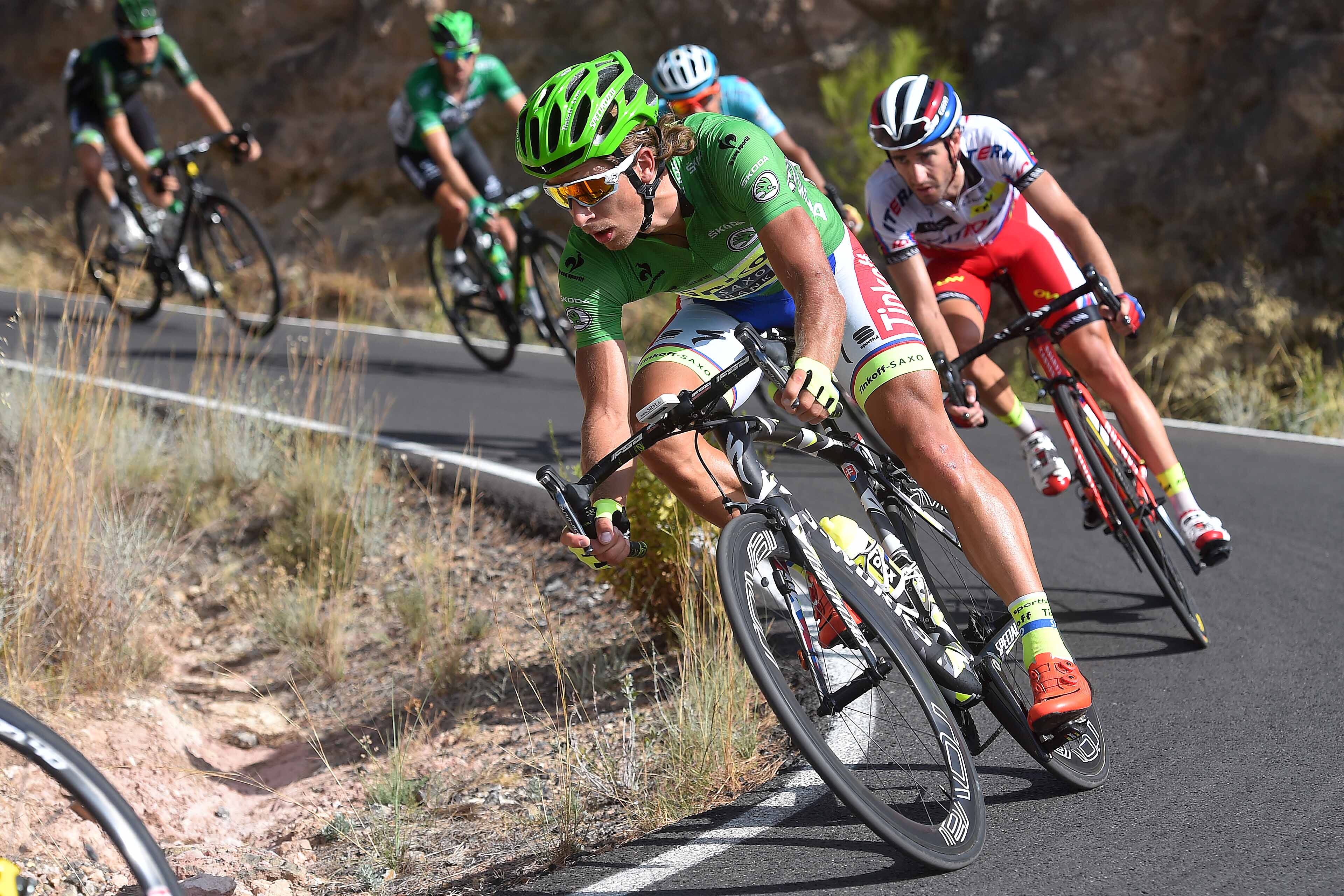
Walking away from the stage 8 finish of the Vuelta a España, a serious-looking Tinkoff-Saxo sports director Tristan Hoffman has confirmed that after talking to the race organisers about Peter Sagan’s crash, a race motorbike “took Peter down.”
With less than 10 kilometres to go from the finish of stage 8 during a hectic finale, it appears Sagan was struck by a race motorbike.
The Vuelta organisation later confirmed that the pilot of the motorbike responsible for the crash has been excluded from the rest of the race “for overtaking a group and provoking the crash of the rider Peter Sagan.” They also apologized for the incident.
Sagan’s fury was clear after the crash as he lashing out at race vehicles. His shorts ripped to shreds, the Tinkoff-Saxo rider punched the medical car, gestured vehemently at the race motorbike, then appeared to kick his own bike. The next TV images showed the 25-year-old back on the bike but dropped from the front group.
“Unfortunately, it isn't the first time such an incident happens," Sagan said later in a team press release. "Even if motorbikes are forced to go through a group of riders, they should do it very carefully and not recklessly. In my opinion, motorbike drivers don't take the safety of the riders in consideration seriously. Fortunately, my injuries aren't very serious but can you imagine what would have happened if he had ran over me?"
The motorcycle involved belonged to the Shimano neutral support team - one whose reputation was sullied when a support car knocked Jesse Sergent (Trek) down when he was part of a breakaway in the Tour of Flanders. Sagan was blocked in the Tour de France by a camera motorbike when attempting to change bikes in the Tour de France, too, but highlighted the dangers of this incident.
“If I had crashed alone or with another rider, I would have considered that to be part of the sport. However, being hit by a motorbike of the race organization shouldn't be acceptable. The safety of the riders should be an absolute priority and all vehicle drivers involved in a race must be more attentive. I really hope this incident is the start of a series of necessary changes in the way races are organized."
Get The Leadout Newsletter
The latest race content, interviews, features, reviews and expert buying guides, direct to your inbox!
Finishing over five minutes down, Sagan pedalled his way to the TInkoff-Saxo bus after the stage, some 200 metres beyond the finish in one of Murcia’s central avenue. Surrounded by a huge cloud of TV cameramen and reporters as soigneurs flagged him across to the bus, Sagan went straight onto the bus, a bad case of road rash and large cuts on the rear of his right leg plain to see as he did so.
Asked what had happened during his post-stage discussion with race officials, and speaking before the official press releases came out from the Vuelta and TInkoff-Saxo, Hoffman told a small group of reporters that “I didn’t see what happened with Peter, but it seems like a motorbike came up from behind and took Peter down. I don’t know which motorbike or which person it was, and first we have to know that.”
According to Hoffman, the organisers had explained “The motorbike wanted to get behind the break, there were fewer riders in front and the motorbike wanted to support them. Meanwhile it took Peter down.”
The winner of stage 3 into Malaga stayed in the main group while many top sprinters were dropped on the double ascent of Alto del Cresta del Gallo, and the Slovakian was arguably top favourite for the stage in the 50-strong lead group and a chance to overtake race leader Esteban Chaves in the points classification. As Hoffman put it “for us this stage was a good opportunity, and I hope Peter is ok. We were there in the front fighting for victory and this happens, it was a big disappointment.”
“This has happened, of course it shouldn’t have happened, it’s a bad situation and we need to think who it is [that caused the break].”
The team was thrown into confusion after the incident happened, with Tinkoff-Saxo’s Jesper Hansen reportedly continuing to drive on the front after Sagan had crashed because of a radio miscommunication. “It happened with Rafa Majka in the Tour,” Hoffman commented - when Alberto Contador crashed and was delayed and Majka continued to set the pace in the group ahead of him.
“Of course at the moment that Peter was still in the group [just before crashing] we needed the riders to support him. We were pushing the boys to start riding to get the breakaway back but then Peter crashed and I told them to stop. Jesper has always been loyal to the team and I believe there was no [radio] connection with him so he couldn’t hear us.”
Asked if Tinkoff-Saxo will make an official complaint, Hoffman said he had just asked for information “and that’s up to management, not to me.” But he did confirm that Sagan was suffering from a badly scraped up leg, although the full extent of the injuries, on which Sagan’s start on stage eight will depend, have yet to be analysed.
Tinkoff-Saxo later issued a sternly worded press release saying they would indeed consider legal action “against the person or persons responsible for crashing into Peter Sagan with 8.2km to go on the stage.”
“Tinkoff-Saxo believes that such accidents caused by reckless human error, regardless of whether they affect Tinkoff-Saxo’s riders or riders of other teams, are unacceptable at the top level of the sport of cycling,” the press release added.
Sagan himself was also fined 200 Swiss Francs “for threats and insults,” as well as a further 100 Swiss Francs for “behaviour which damages the image of cycling.”
"I go back to the team hotel and I read I was fined 300 francs for insults and threats as well as behavior that damages the image of cycling. I will, obviously, pay it but I consider it unjust," Sagan said.
Alasdair Fotheringham has been reporting on cycling since 1991. He has covered every Tour de France since 1992 bar one, as well as numerous other bike races of all shapes and sizes, ranging from the Olympic Games in 2008 to the now sadly defunct Subida a Urkiola hill climb in Spain. As well as working for Cyclingnews, he has also written for The Independent, The Guardian, ProCycling, The Express and Reuters.
